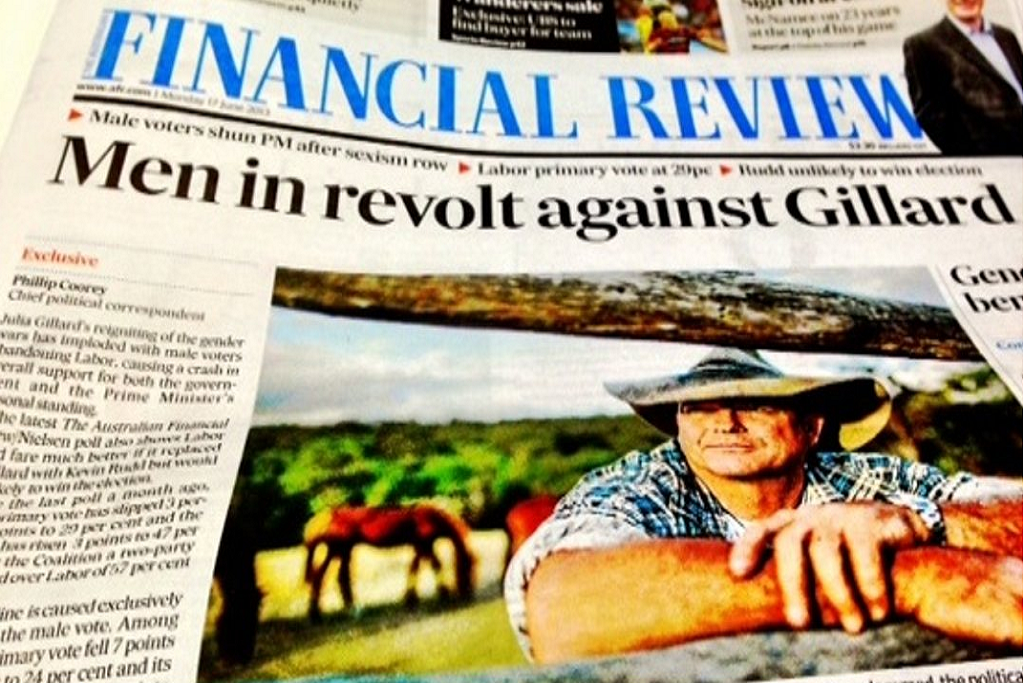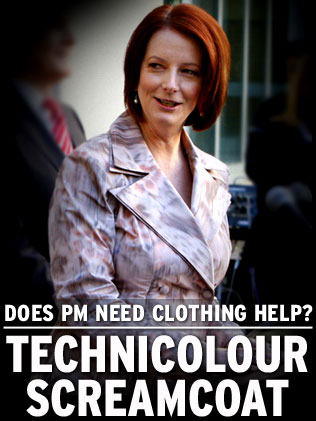New Research Confirms The Media Was Pretty Bloody Sexist When Covering Julia Gillard
Surprise, surprise.

There’s one, big, obvious comparison to make between Julia Gillard and Malcolm Turnbull. They both secured the Prime Ministership by taking down down sitting first-term leaders from their own party. But according to new research, the media treated them very, very differently when they did it.
A study by Blair Williams, a PhD candidate from the Australian National University, has found that 58 percent of the articles about Gillard’s rise to the top job discussed her gender, and nearly half of those articles insinuated her “femininity” was not Prime Ministerial. The coverage of Turnbull, perhaps unsurprisingly, was much more positive. The study was presented to the Australian Political Studies Association Conference in Sydney today.
“Gillard experienced an abundance of gendered criticism,” Williams said. “Even some female journalists focused on her gender when they spoke about her positively, talking about her flawless skin or fashion.”

A flashback to some casual sexism from The Daily Telegraph.
The research focused on three newspapers: The Australian, The Sydney Morning Herald and Adelaide’s The Advertiser. Williams told Junkee that she was motivated to do the research after watching Turnbull ascend to the leadership. “I spent the whole of 2014 researching Gillard and misogyny in the media. When Turnbull became the leader I didn’t see the same gendered vitriol that Gillard did. So I re-looked at my research and conducted a similar analysis with Turnbull,” she said.
“With Turnbull, articles said he ‘claimed’ or ‘seized’ the role, whereas Gillard was portrayed as being a ‘backstabber’ or as ‘disloyal’. The most shocking thing I found was that Turnbull was very rarely blamed for removing Abbott, but Liberal women were. Julie Bishop was called disloyal and comparisons were made to Gillard. Peta Credlin was also blamed for Abbott’s failings.”
The research backs up a strong sense in the community that Julia Gillard was the victim of unfair, sexist criticism in the media. The former Governor-General, Quentin Bryce, said Gillard was “abused” in the media because of her gender. According to Williams, one of the worst perpetrators when it came to sexist attacks on Gillard was, surprise, surprise, Alan Jones.
But it’s not just the Australian media that’s pretty average when it comes to female politicians. “I’m at a political science conference right now and everyone’s talking about Clinton, because of the debate,” Williams said. “The first thing people see of Clinton is that she’s a woman, because it’s the first time there’s been a female candidate. She has to operate as a woman in this incredibly masculine environment. It really impacts on a lot of things. She comes across as ‘wooden’. But if it was a man she would come across as strong, or confident.”
In a post for the Humans of New York Facebook page earlier this month, Clinton talked about her experiences of sexism throughout her life. “I had to learn as a young woman to control my emotions. And that’s a hard path to walk. Because you need to protect yourself, you need to keep steady, but at the same time you don’t want to seem ‘walled off’. And sometimes I think I come across more in the ‘walled off’ arena,” Clinton wrote.
So is the media ever going to get better? “The more women that are in a traditionally masculine space, the more it becomes normalised,” Williams told Junkee. “If more women enter these spaces it doesn’t become newsworthy anymore. It will become easier for the women after Gillard and the women after that.”